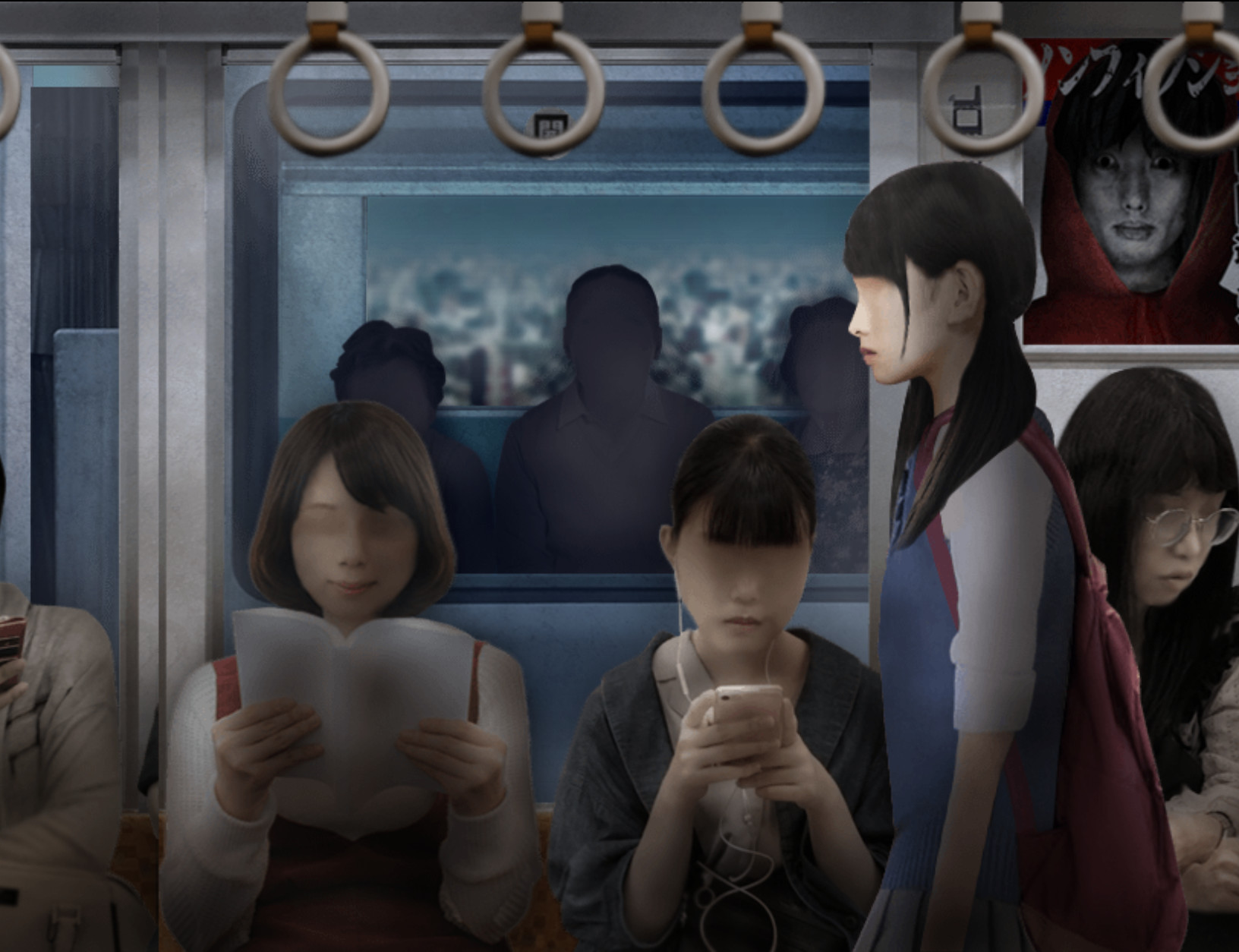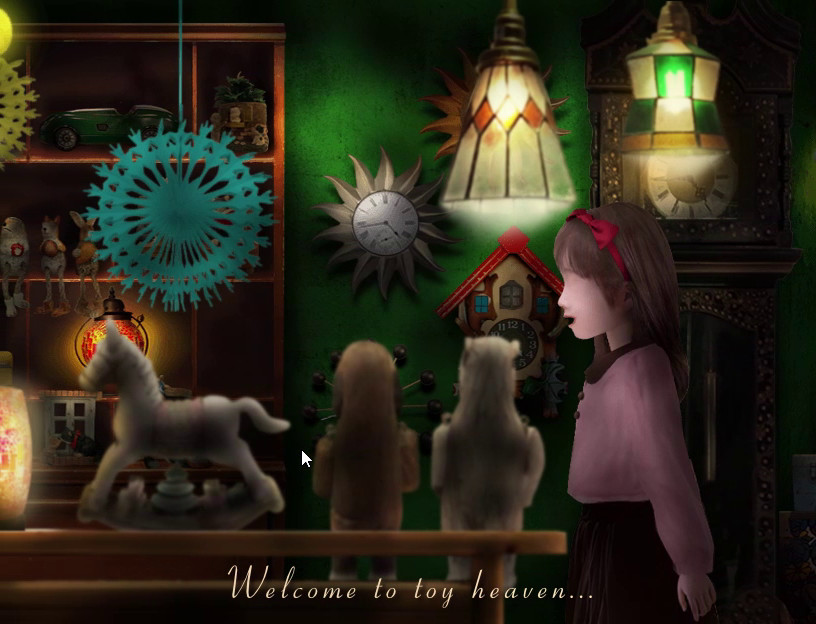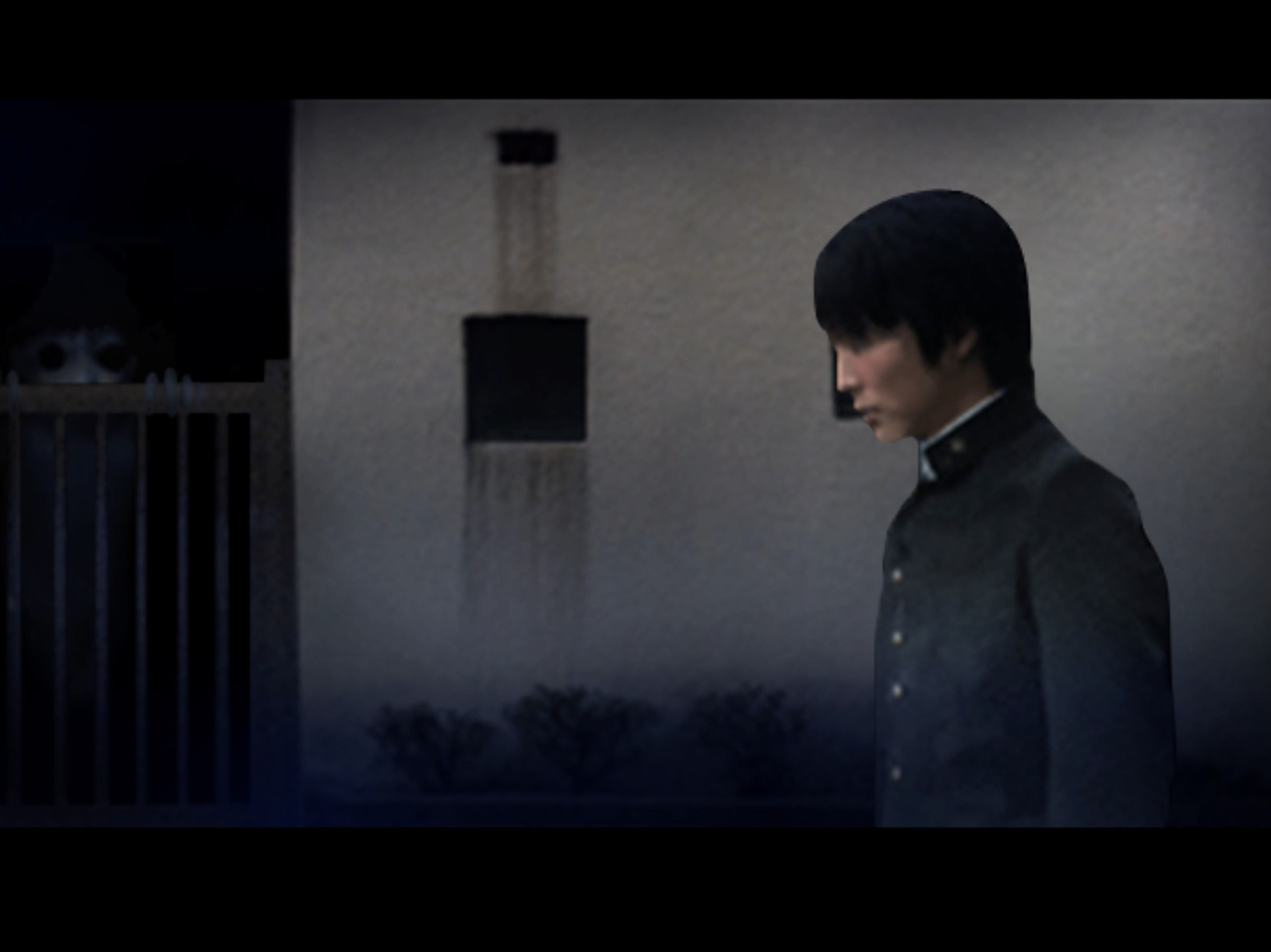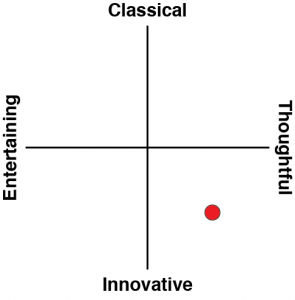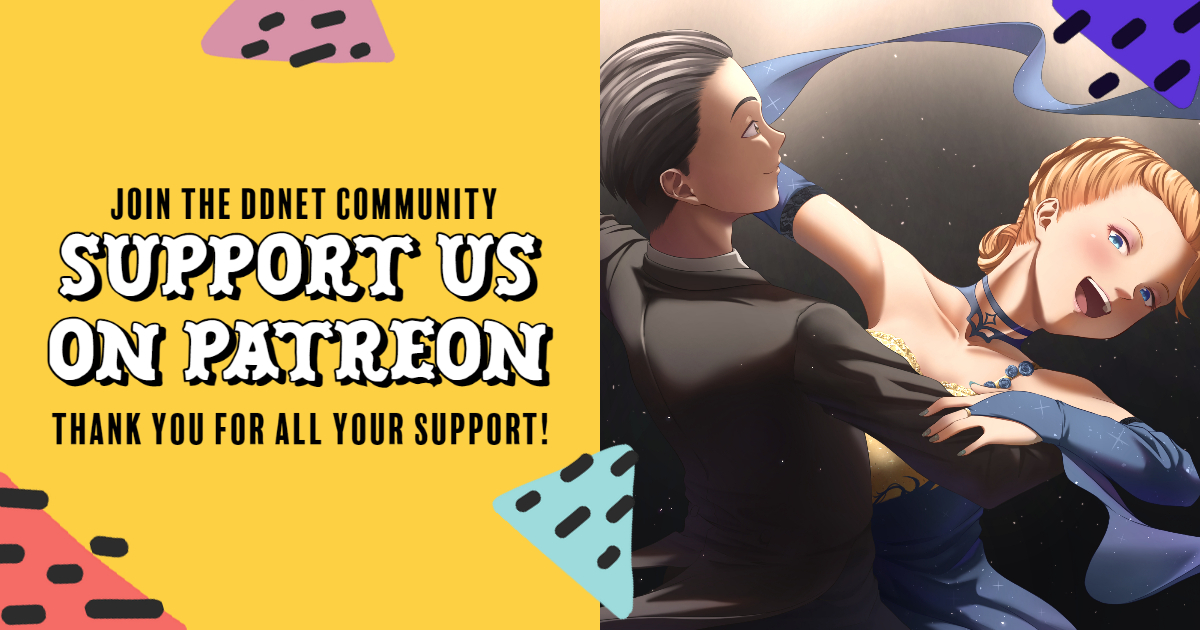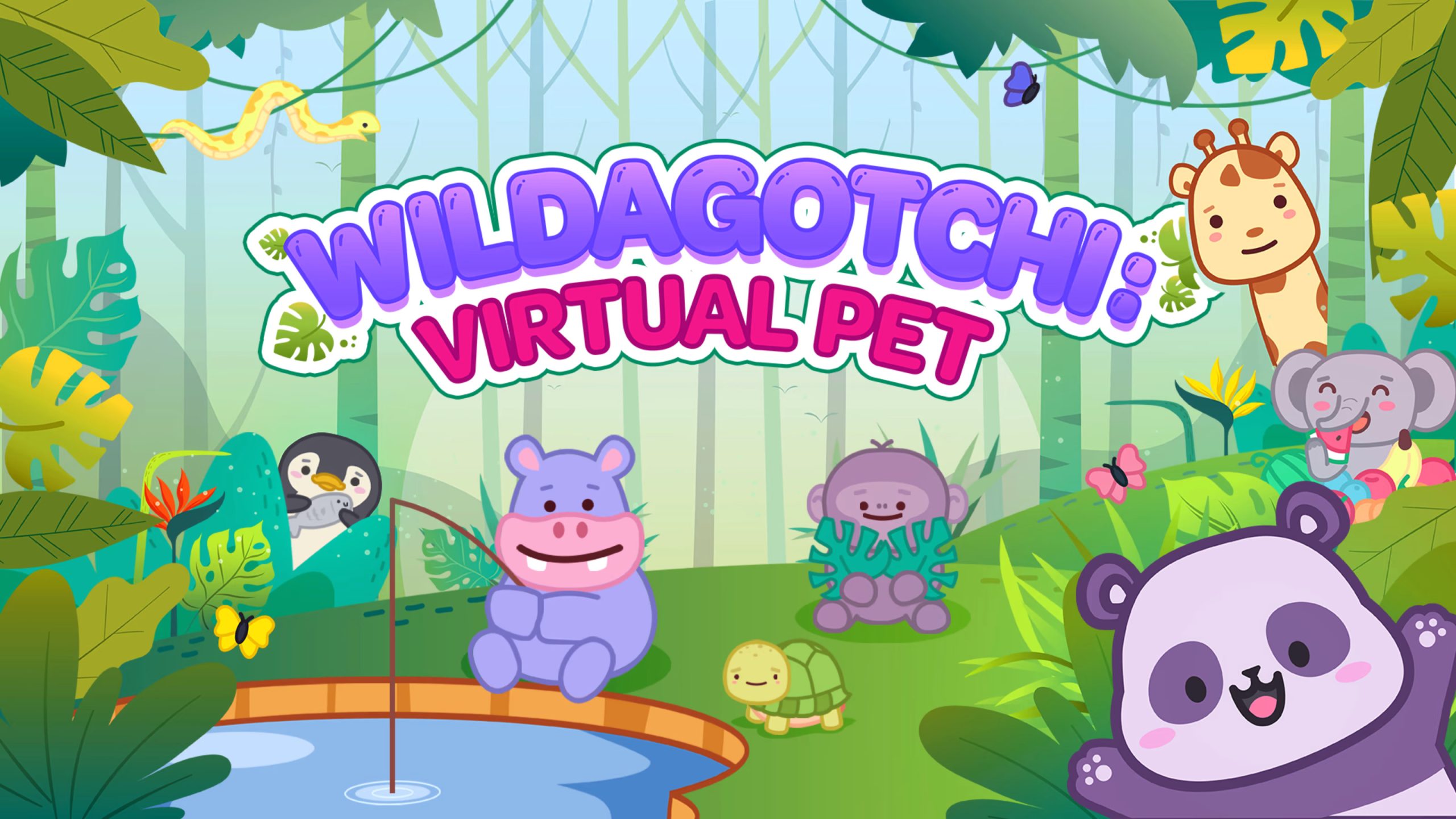Tsugunohi has been around for a few years on PC, but despite the developer proudly proclaiming the many, many minutes of streaming time it has chewed up in the promo material (over 100 million video views, apparently!), it’s been niche and exactly that kind of indie horror. Now it’s on Nintendo Switch, and it’s a fascinating curiosity. It’s simultaneously the exemplary example of what video game horror should be, while also being a pretty poor horror game.
Tsugunohi offers a simple, looping premise. It’s broken down into a series of short stories, with each allowing you to take control of one of a large number of characters (including a guest appearance by Kizuna AI, for some reason), and then guide them from right to left as they go about a repetitive activity that they complete each day (walking through a train carriage, walking home after school, and so on). Everything around them and their suburban lifestyle is pretty normal the first day. On the second day, some creepy things start happening. There’s a fleeting vision of something in the background. A passenger on the train acting strangely.
Those moments of weirdness become more pronounced and sinister. By the fifth day, the entire world has transformed into a nightmare and you just know something horrible will happen to the character. And yet the only thing you can do is move the character from right to left, to their inevitable fate. There are no weapons to defend them. There are no hiding spots or the opportunity to escape. With every step you bring the character towards a certain doom, and there’s nothing you can do about it.
Horror is meant to disempower. Throughout history, the things that have terrified us, from those primitive legends, to the concept of hell, and on to werewolves, vampires, demons, Lovecraft’s monsters from outer space and, recently, slasher horror villains like Jason, Freddie, Leatherface and Michael are things that are an unstoppable force that we can’t fight back against. If we get in its way nothing will save us. Sure the stories will usually have some survivor or other, but that’s not before you spend much of the story feeling like the situation is hopeless.
This makes sense when you consider that horror is at least partly a reflection of our societal fears. As noted in this decent summary essay on the appeal of horror: “DJ Skal, cultural historian, explains that horror films are a reflection of our societal fears. In his book, The Monster Show, he talks about horror entertainment links between the great social crisis of our time. David J. Skal’s work is described as “directly related to the country’s current economic woes and fears about a failing safety net and a changing world.” Horror entertainment is the outlet to let out social anxieties and become a place to escape from societal failures.”
Society, as a collective, feels fear about the loss of control of its own destiny. So much horror, for example, makes the subject of fear a foreign outsider (be that alien, invasive species, and so on). Lovecraft was infamously racist towards African Americans, but that explicit racism was easily matched with the xenophobia implicit in his idea of “unknowably different” species driving Americans insane simply by witnessing them. Looking at how freaked out real-life Americans are by even mild cultural differences, Lovecraft’s xenophobia seems like an astute observation on social anxieties about “other” cultures. Slasher horror, meanwhile, is a response to society losing control of its youth to “sex and drugs.” Dracula was in no small part the product of Bram Stoker struggling with his sexuality and sensing that he has lost control of it – a fear many felt during that sexually repressed era. Religious-based horror, such as the many variations of Exorcist films, plays on the fear that many in society feel that the world around them has, to quote REM, Losin’ My Religion.
For horror to work as a reflection of societal fears, the audience needs to feel powerless in witnessing the object of the horror. Tsugunohi does this. More than almost any other game, you are totally disempowered by being able to do little more than move directly towards the source of the nightmare.
This raises the question “What social fear is Tsugunohi reflecting on?” and I think it’s a poignant one today. Each character goes through perfectly mundane but routine activities within each story arc. Their face has been blanked out and is mostly featureless. They move glacially slow. They’re largely oblivious to the world around them. On the first day, it’s fine. Each day after that this completely mundane and dehumanising routine becomes increasingly unbearable until the nightmare becomes too much. Tsugunohi is a reflection on the fear of the exhausting, repetitive, mundane existence that many feel in modern life. There’s a term for it, “Koinophobia,” and given that nearly one-half of people are looking to move on from their jobs under “The Great Resignation,” it’s safe to say that the restlessness about being “trapped” in a job and mundane routine is a kind of social-wide Koinophobia sweeping society today. The monsters and nightmare scenarios of Tsugunohi are a metaphoric representation of the existential dread so many of us feel when we plod our way back to the same home, over the same streets, having alighted from the same train at the same station, after another day at the same job.
Tsugunohi does all of this with very few words, and each scenario is super-short, taking just a couple of minutes to play through. This is important, because any scenario wordier or longer would have counter-intuitively desensitised players to the point where they were just going through the motions and each loop became, ironically, rote. Thankfully the developers resist this so each scenario has the maximum possible impact.
For all the positives about the game’s concept and storytelling, the presentation really lets it down in execution. The various malevolent entities aren’t scary, because they look like little more than poorly-drawn cardboard cut-outs. The various groans, moans, and screams they make have the audio fidelity of a recording of a recording. Unfortunately, horror is an atmosphere-driven experience, and as brilliant as the concept is, the lack of atmosphere from the cheap presentation prevents Tsugunohi from being one of the indie masterpieces.
Tsugunochi is just a few dollars to purchase, and it is a very pure concept for a horror game. Anyone that’s a fan of the genre should do themselves a favour and pick this one up. As an academic exercise and piece of horror theory, it’s one of those that you do want to pull to pieces and study. This will enable you to better appreciate the way that the better examples of horror work on a psychological and intellectual level.


